
Princess Konstancja Małgorzata Lubomirska (1761–1840) was a Polish noblewoman and artist. She was an amateur artist and some of her drawings are preserved.

Kazimierz Radosław Elehard baron Kelles-Krauz was a Polish philosopher and sociologist, member of the Polish Socialist Party. He was one of the most significant Marxist thinkers at the end of the 19th century.
Michał Lubomirski (1752–1809) was a Polish military commander and a Lieutenant General of the Polish Army. A son to Stanisław Lubomirski (1704–1793), he should not be confused with his ancestor Aleksander Michał Lubomirski.

Józef Czapski was a Polish artist, author, and critic, as well as an officer of the Polish Army. As a painter, he is notable for his membership in the Kapist movement, which was heavily influenced by Cézanne. Following the Polish Defensive War, he was made a prisoner of war by the Soviets and was among the very few officers to survive the Katyn massacre of 1940. Following the Sikorski-Mayski Agreement, he was an official envoy of the Polish government searching for the missing Polish officers in Russia. After World War II, he remained in exile in the Paris suburb of Maisons-Laffitte, where he was among the founders of Kultura monthly, one of the most influential Polish cultural journals of the 20th century.

Leonard Borejko Chodźko (1800–1871) was a Polish historian, geographer, cartographer, publisher, archivist, and activist of Poland's post-November-1830-Uprising Great Emigration.
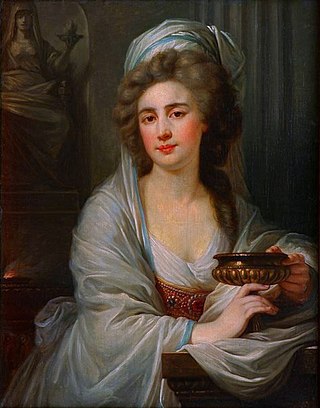
Zofia Potocka was a Greek slave courtesan and a Russian agent, later a Polish noblewoman. She was famous in contemporary Europe for her beauty and adventurous life. During the Russo-Turkish War she was the lover of the Russian commander Prince Grigory Potemkin and acted as an agent in Russian service.

Pyzówka is a village in the administrative district of Gmina Nowy Targ, within Nowy Targ County, Lesser Poland Voivodeship, in southern Poland. It lies approximately 9 kilometres (6 mi) north-west of Nowy Targ and 59 km (37 mi) south of the regional capital Kraków.
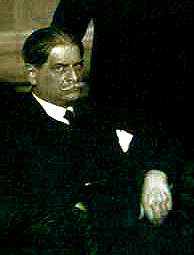
Stefan Tytus Zygmunt Dąbrowski (1877–1947) of Radwan coat of arms – Physician, physiologist, biochemist, and Polish politician. Rector: Adam Mickiewicz University - Poznań, Poland (1945–1946).
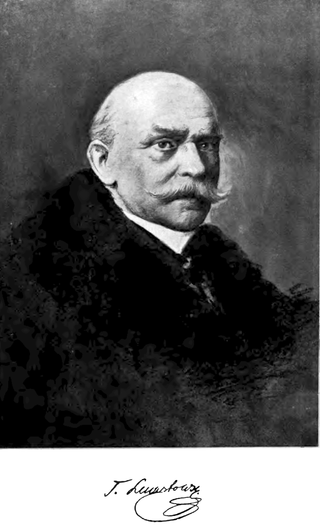
Teofil Aleksander Lenartowicz was a Polish ethnographer, sculptor, poet and Romantic conspirator. Linked to Bohemians among Warsaw intellectuals, Lenartowicz was associated with Oskar Kolberg and Roman Zmorski in the anti-Tsarist independence movement, and participated in the Greater Poland Uprising of 1848 during his stay in Kraków. While in exile he taught Slavic literature at the University of Bologna, composed patriotic and religious poems, as well as lyrical and historical epics based on the folklore of his beloved region of Mazowsze. He did portrait-sculptures, and designed tombstones.

Aleksander Narcyz Karol Przezdziecki was a Polish historian and publisher. Son of Konstanty Przezdziecki, and nephew of Karol Dominik Przezdziecki.

Władysław Łuszczkiewicz was a Polish historian and painter of the late Romantic era from Kraków, active in the period of the foreign partitions of Poland. He was a professor at the Academy of Fine Arts and served as its principal in 1893/95. One of his best students was Jan Matejko, the eminent Polish historical painter and later, his close associate. Łuszczkiewicz taught painting, drawing, anatomy and architectural styles. Highly educated, he also worked as conservator of architectural monuments in the city later on in his career, and wrote historical dissertations.
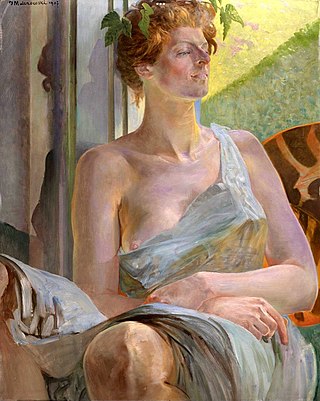
Jadwiga Maria Kinga Bal (Balowa) of Zaleszczyki, née Brunicka was a Polish baroness and a lifelong muse of Jacek Malczewski, considered Poland's national painter. She served as the live model for a series of his symbolic portrayals of women, as well as nude studies and mythological beings. Most were completed before the interwar period when Poland had not yet achieved independence.
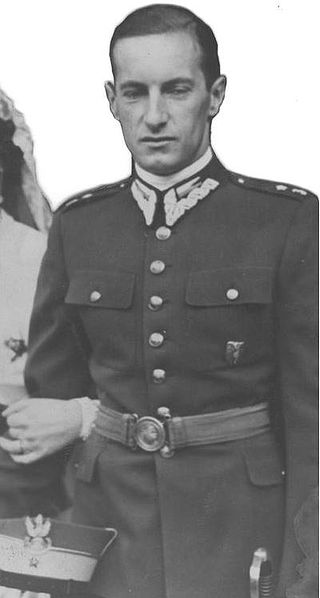
Prince Dominik Rainer Radziwiłł was a Polish aristocrat and officer of the Polish Army.
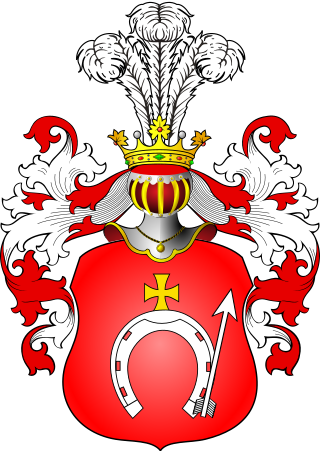
Szeptycki was a major noble family in Ruthenia. The family was related to a number of other noble families, such as the Wiśniowiecki, the Ledóchowski and the Fredro.
Franciszek Stanislaw Kostka Hutten-Czapski, Leliwa coat of arms - Count, Polish Senator, the last Governor of Chelmno, Member of the Bar Confederation. Knight of the Order of the White Eagle (Poland)(1762). An exhibition at the Royal Castle, Warsaw between November 9, 2005 and January 31, 2006, exhibited what was purported to be Franciszeks Order of the White Eagle, donated to the National Museum, Kraków by Emeryk Hutten-Czapski.
The Łubieński family are Polish nobles who take their name from the village of Łubna-Jarosłaj near Sieradz, in central Poland. They attained magnate status in the 18th century before the Partitions of Poland. One of their number, the reformer and Minister of Justice during Congress Poland, Felix, received the hereditary title of Graf, from king Frederick Wilhelm III of Prussia in 1796. He and his wife, the writer, Tekla Teresa Lubienska had 60 grandchildren.

Romuald Giedroyć was a Polish-Lithuanian prince from the princely Giedroyć family, who fought in the Bar Confederation, War of 1792 and the Uprising of 1794 as part of the Grand Ducal Lithuanian Army. From mid-1812 to early 1813, Giedroyć was also the commander of the Polish-Lithuanian regiments raised during the French invasion of Russia. In early 1813, he was captured by the Russians and exiled to Arkhangelsk. In 1815, Alexander I of Russia amnestied Giedroyć and made him a Lieutenant general of the Army of Congress Poland.
Ludwik Maria Łubieński, comte de Pomian was a Polish lawyer, diplomat and military officer. He was Head of the Polish Maritime Mission in Gibraltar during World War II and an eyewitness of the air disaster whose victim was the Polish wartime Premier and military leader, Władysław Sikorski. After the war, he became an expatriate official in Munich and London.
Jan Ludwik Plater was a voivode of Inflanty and a Polish writer.

Cezary Augustyn Plater was a participant in the November Uprising and Polish émigré activist. He was brother of Władysław Plater and cousin of Emilia Plater.















